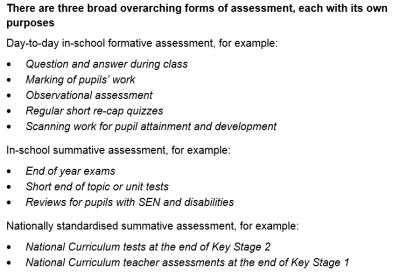Back in May I carried out a straw poll via Twitter asking people about their use of tracking software in primary schools, and was disappointed to find that nearly half of responses showed that schools were still using a tracking system that required 3 or 6 steps of progress each year. Despite all the efforts to move away from levels, to avoid the race for progress, to stop the labelling and grouping of pupils, it seemed that many schools had simply replicated the old system.
Since then, we’ve had further guidance from the DfE in the form of the Assessment Commission report, and widespread sharing of videos from Tim Oates and Sean Harford. Many more schools, who in May had not made a decision on software, will now have gone ahead with something new, so I repeated the survey to see if things had changed.
Things are not looking good. Back in May around 45% of schools had opted for a 3-step or 6-step model (replicating the old sub-levels and points-based systems). In the latest survey, that proportion has risen to 49%, with another 15% using another number of steps.
It seems we’re a long way off “assessment without levels”.
As last time, I also polled people to find out which tracking systems were in use. The following graph shows those software programs which had 10% of more of the responses:
As before, Target Tracker makes up nearly a quarter of responses, with its system that allows a choice between 3 or 6 point measurement!
Interestingly, although some software options do not themselves impose (or even include) a step-tracking model, some schools have clearly adopted their own in addition to their main tracking approach. Evidence – as if more were needed – that the fear in schools about proving measureable progress remains as clear as ever.
What’s the alternative?
I’ve made quite clear before my preference for a Key Objective approach to tracking. As Dylan Wiliam says, when it comes to assessment & tracking, we need to focus on the ‘big ideas’ -the things that really matter.
My worry at this stage is for the ‘formative’ elements of these tracking systems – even those that don’t use a steps model. Many offer a combination of formative and summative tracking, which includes breaking down the whole national curriculum into clickable steps. By my estimation, that could leave a typical teacher in KS2 with over 100 statements to be clicking for each pupil. 3000 statements a year to be ticked off.
For schools still struggling with this idea, I’d urge them (as I have before) to take a look at the NAHT’s approach to Key Performance Indicators. It makes much more sense to focus on high quality assessment of fewer things; otherwise teachers will just be run ragged trying to tick all the boxes.
As Tim Oates has said: it’s not that we need less assessment; rather we need more assessment of the right things. It seems we haven’t quite got there yet.


